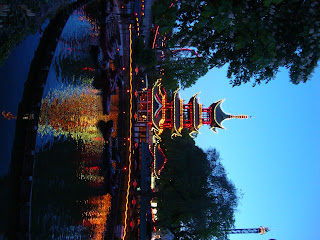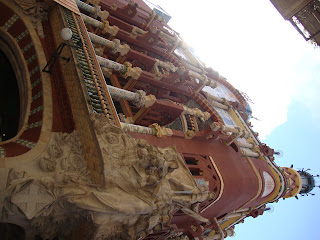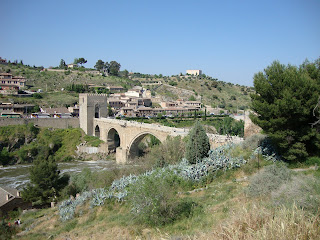I was really looking forward to time in Granada. This city is so important in terms of history; it was the last stronghold of the Moors in Spain, and in 1492 it was all over with the capture of Granada. The change from north to south, even from Madrid to Seville, is telling. Madrid, like I said, is very mainstream European. The south of Spain is European as well, but with a lot of Moorish influence discernable in their architecture and decorations. For example, tiles were nonexistent in Madrid, but in Andalucia they’re everywhere!
So back to Granada. I really liked the city and wish I could spend more time there. The good thing about a tour is that you see a lot, and you don’t have to figure it out yourself. However, you can’t spend as much time as you want in certain places. We drove through the morning from Seville to Granada and only had the afternoon in the city. It’s a small city, with little shopping streets, plazas, and the Gran Via through the center. We went to the Royal Chapel in the morning (the cathedral was closed) and saw the tombs of Ferdinand and Isabella, the two Spanish monarchs who united Spain (from a conglomerate of kingdoms) and outsed the Moors from Granada. They still celebrate mass in the little chapel every day, even though they have a cathedral with services, because Isabel wanted it that way. They even have a candle burning all the time because she wanted it that way. Can you imagine? Being so powerful and influential that what you said 500 years ago still matters to these people? It’s amazing.
We then went up to the Albaycin, the old Muslim quarter of the city built onto a hill. It was picturesque—whitewashed houses, with iron balconies and colorful flowers.
 |
House in the Albaycin
|
 |
View of the Alhambra fortress from the Albaycin
|
 |
View of Granada from Albaycin
|
We walked up for a great view of the Alhambra and the city. These two guys were singing in Spanish with guitars, but their song was a little weird.
“Look at the Alhambra, how beautiful”—sounds normal, right?
“The Alhambra, the Alhambra, it is falling”—Wait, what?
“We will rob you while you sleep”—Excuse me?!?!
Probably trying to impress the non-Spanish speaking tourists, but I was laughing the whole time at their ridiculous (awful) lyrics.
Our next day took us to Valencia which, like Granada, I wish I had more time in. Again, the drive was beautiful, with little villages wedged into the side of mountains, some of them covered in snow. Our first stop in the morning was in this little town to see a Troglodyte cave. You enter the cave like a normal house, only the house is actually made out of the walls of the rock surrounding it. People would just dig into the sides of hills to make their house. It was pretty cool to see.
We resumed our scenic drive, past the Mediterranean. You can make out little towns in the hillside with a walled fortress on the top of a hill, with the tower of the church peaking out from the town below. Terraced rows of fruit trees cover the hills and the valleys in between them.
Our visit to Valencia started with the Ciudad de Artes y Ciencias, a grouping of new museums.
It was a rainy day in the city unfortunately, so we walked around and hung out in the main plaza of the city.
 |
Main plaza
|
One of the cool things I learned about Valencia is they have these falles (like big comical floats) on St. Joseph's Day. Each neighborhood works really hard on one float, and then the day of Falla, the festival, they burn all but one of them! It's really something to see, another reason to go back.
My next installment will be highlights of Barcelona--stay tuned!























































